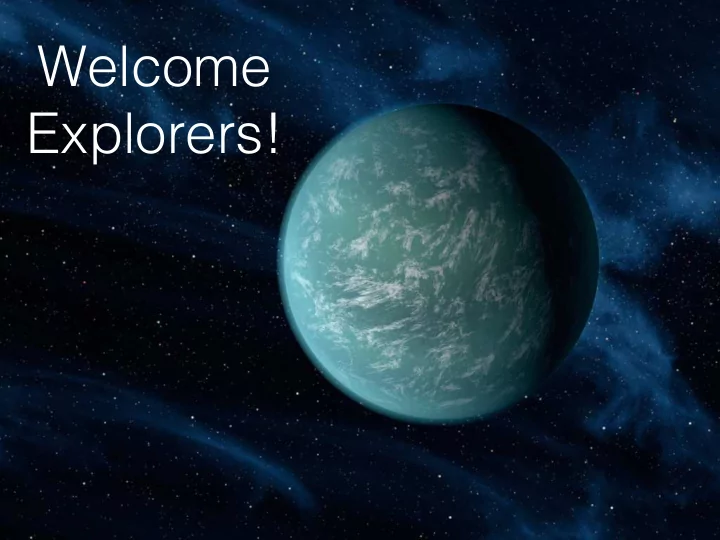

Welcome Explorers!
Extrasolar Planets Have been Discovered! • Over 3,500 extrasolar planets have been discovered orbiting other stars • We want you to help us determine what kind of life may be forming on these planets
The Assignment • Your group will be assigned a planet orbiting one of two star types; red or blue. • Your job is to first determine the planetary features. Is it hot or cold? Dry or humid? Mountainous or flat? • You will then work together to determine what kind of ecological systems may be forming on these planets
The Sun • Temperature around 10,000 o F • Emits visible light, primarily yellow light • Stable for about 10 billion years
Blue Stars • The largest and brightest stars • Temperature around 35,000 o F (the Sun is only 10,000 o F) • Up to a million times brighter than the Sun • Emit blue and ultraviolet light • Stable for only 10 million years (Sun will be stable for 10 billion years)
Red Stars • The smallest and dimmest of the stars • Temperatures around 5,000 o F • Emit primarily red and infrared light • Can be stable for 100 billion years!
Habitable Zone Range of distances from star where liquid water can exist on surface of a planet.
Exoplanet Exploration Mission Teams of Three: communicator, surveyor, and biologist Assigned a planet around a star of a known “color type” that exists within the star’s habitable zone. What is your planet like?
REPORT QUESTIONNAIRE On average, is the planet temperature warmer, 1. the same, or cooler than Earth? What is the length of one day? Year? 2. Is the gravity greater or less than that of earths? 3. (Think about radius and density of your planet)
REPORT QUESTIONNAIRE What features exist on the surface? (e.g. 4. mountain ranges, oceans, hurricane-like storms) Is your planet in a nearly circular orbit or does 5. the distance from it’s parent star change significantly during the course of a year? Is the tilt of the axis greater or less than earths? 6. How would this affect the weather?
REPORT QUESTIONNAIRE How many moons does the planet have? 7. (consider the affects on the tides) Roughly how old is the planet? (consider the age 8. of the parent star) What makes your planet unique? 9.
Additional Characteristics to Consider • How much liquid or frozen water does your planet have? Is it a water world or a barren desert? • What is the weather like? • Is the planet geologically active (e.g are there volcanos, is there motion of the tectonic plates)? • Does the planet have any rings? Are they large like Saturn’s or small like Jupiter’s?
What makes Earth Habitable? • Stability (geologic, atmospheric) • Some variation is good though! (tectonic plates) • The magnetosphere (Earths natural force field!)
Habitable Zone Hundreds of exoplanets are known to exist within their star’s habitable zone.
Recommend
More recommend